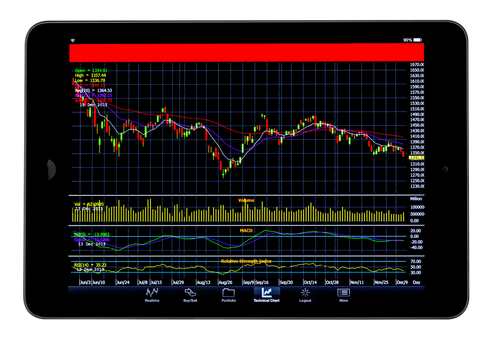A Guide To Investing In Online Market Indexes
In today’s busy world, anyone with a mindset to create a secure future for themselves and their loved ones has or is thinking of investing. Investing is one of the smartest ways to get your money or assets to work for you. A smart investor, therefore, is obligated to thoroughly do their research to determine what the best investments are. They could invest in an organization, the government, or even a private company. Regardless, every investment should bring back the initial investment plus the profits. And one of the best ways to do so is investing in marketing indexes. The beauty of stock market indexes is that they available online 24/7. One can access the progress of an index through any compatible device as long as there is an active connection link.

We even have applications built specifically for this purpose.
Definition of a Market Index
An index is a measure or indicator of something. Specifically, in the financial world, they refer to a statistical measure of the change in the securities market. Therefore, a market index is a measurement of a section of the stock market. This is the tool that financial managers and investors use to compare the returns of specific investments. A perfect example of a market index is the Nasdaq 100 index.
How to invest in stock market indexes
1:- Choose The Approach You Want To Invest In With
Before getting into the whole exercise of investing your money, you first have to decide on the approach you will adopt. Under this concept, you should ask yourself the following questions. Are you equipped with the skills to choose, analyze, and determine the stocks on your own? Or do you need assistance by hiring a broker to do the work for you? If you choose to get into stock exchange on your own, you need to have quite a bit of knowledge on the trends the market follows. You should have a good grasp on the types of indexes available to you and know precisely how they operate and how they are weighted. But if you choose to get a broker, all this is done for you. Although, you should be sure to get one who won’t take advantage of your naivety. Hire a qualified one with trusted references and a good financial track record. Regardless, you should have a bit of background information about the stocks.
2:- Open An Online Investing Account
Investing in the stock market indexes goes hand in hand with saving. An investment account is essential as most indexes limit your direct access to the mutual funds and individual stocks. Again, here, you have two applicable options. For the hands-on investors, it would constitute the opening of a brokerage account. This kind of account is easy and is also the cheaper option for buying stocks, funds, and other investments. This type of account calls for individuals who have a clear grasp of the stock market. It is preferred by people with an initial financial background. The second option is the passive option, which means opening a robo-advisor account. Such an account offers the services of stock investing without the owner necessarily picking the stocks individually. It does all that for you.
3:- Learn The Difference Between Stock Mutual Funds And individual Stocks
There are two types of investments, individual stocks, and exchange-traded funds. Let’s say you decide to buy a single or a collection of shares from a specific company, then that is investing in individual stocks. Here you are at liberty to choose and build a broad and differing profile out of many individual investments.
This type of investment is advantageous as it could result in profitable returns if done correctly, but the probability that a single investment will win you a jackpot is uncertain. Alternatively, if you decide to invest in mutual funds, you purchase small pieces of many different stocks in a single transaction. Under this investment plan, with every share purchase, you ideally get to own part of the companies as well. The best part about the mutual funds is that they lessen the risk because of their great diversity.
Conclusion
After you have followed the steps above, then you are good to go ahead and invest. But the last fundamental step you need to take into consideration is to set up a budget on what you are willing to spend. Be wise not to go overboard but stick to your range.








